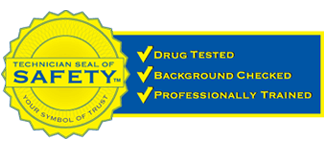 Whether you’re a new homeowner and you’ve purchased your first home or you’ve been in your house for years, it never hurts to have a refresher in caring for your home. All homes, new or old, require maintenance to keep all the systems running smoothly, from your appliances to your water system.
Whether you’re a new homeowner and you’ve purchased your first home or you’ve been in your house for years, it never hurts to have a refresher in caring for your home. All homes, new or old, require maintenance to keep all the systems running smoothly, from your appliances to your water system.
What is the purpose of a water heater tank?
While it takes a whole system of plumbing parts to provide water throughout your home, the water heater is one of the essential parts of your plumbing. If you like taking hot showers, using your dishwasher, or washing a load of laundry in hot water, then regular maintenance on your water tank is crucial.
There are two types of water heaters: gas and electric. There are a lot of parts in these machines, including:
Tank: The inside shell of a water heater is a heavy metal tank with a water-protective liner. It holds around 40-60 gallons of hot water at approximately 50 to 100 pounds per square inch (PSI), within the pressure range of a typical residential water system. The outside of the tank is covered in an insulating material such as polyurethane foam. On the exterior of that is a decorated outer shell (and possibly an additional insulating blanket).
Dip Tube: Water enters the water heater through the dip tube at the top of the tank and goes down to the bottom, where it is heated.
Shut-off Valve: This does what you probably already know: It stops water from flowing into the heater. It’s usually a separate component outside the unit.
Heat-out Pipe: This part is suspended toward the top of the tank’s interior and allows the hot water to exit the water heater.
Thermostat: The control device for the thermometer and temperature. You may find that some electric water heaters have a separate thermostat for both elements.
Heating mechanism: Electric water heaters have heating elements inside the tank to heat the water. Gas water heaters use a burner and a chimney system.
Drain valve: Found close to the bottom of the exterior housing, the drain valve allows you to empty the tank to replace the elements, remove sediment, or move the tank to another location.
Pressure relief valve: This part keeps the pressure inside the water heater within safe limits.
Sacrificial anode rod: Usually made of magnesium or aluminum with a steel core, this part is suspended in the water heater tank to help slow corrosion.
How often should I flush my water heater?
There are a lot of things in a house that demand hot water: showers, dishwashers, sinks, and we (as homeowners) rely on hot water every day. Unfortunately, most folks don’t think twice about the demands we put on our water heaters.
Some people will tell you that you only have to flush your tank once per year. We believe it should be done twice a year: once in the spring and once in the fall. If you have very hard water, we recommend flushing it more often than twice a year.
Why do I need to flush it so often?
Your water heater is flushing out minerals and sediment, and you don’t want that getting into the water you use daily. It brings in tap water, which also includes the natural mineral content of hard water. These minerals sink to the bottom of the tank and start to accumulate, which can cause problems if the water tank has its heating element at the bottom. The more buildup you have, the less efficient your water heater will be.
And the longer your tank goes without a drain-and-flush, the more buildup there will be, which can cause scaling. Scale is accumulated mineralization, which can cause that hard mineral buildup you see around sink faucets and shower heads.
Some of the effects of failing to drain and flush your tank properly include:
- Corrosion: If it goes long enough without a proper flush, you might get some corrosion to the tank, causing weakness in the structural integrity.
- Reduced efficiency: When you get that mineral buildup at the bottom of the tank, you’ll find your water tank takes longer and longer to heat your water.
- Safety: Remember that pressure relief valve? Scaling can cause blockage, and if the pressure relief valve can’t function properly, you may have a disaster on your hands.
How do I flush a water heater?
-
- Turn off the cold water supply. If you have a water softener between your main supply line and the water, there should also be a supply shut-off valve.
- Turn off or turn down the water heater thermostat. You don’t want the heater turning on when all the water has been flushed, especially for natural gas heaters. Otherwise, you may damage your tank.
- Connect a garden hose to the tank’s drain valve near the bottom of the heater. The other end should lead to a drain or somewhere safe outside. (If draining outside, make sure the flow won’t go anywhere near your foundation so that it won’t flow into your crawl space. You should also keep it away from shrubs or other plants.
- Open all the hot water faucets. This will allow the water to drain from the tank faster.
- Open the water heater’s drain valve and let the tank drain. While it’s draining, be sure to check how much sediment is draining with it, and be sure to keep an eye on where the draining water is going. (You don’t want your kids or pets getting near it.) Note: If the drain valve is open and no water comes out, your valve may be clogged by sediment. In this instance, you’ll need to open the temperature pressure release to let off pressure from the tank. Then, use a wet/dry vacuum to remove some of the blockage. Be sure to wear gloves and avoid getting splashed. If the blockage can’t be fixed, call Everest Plumbing!
- Once the draining is complete, turn the cold water supply back on. This can help rinse any sediment left in the bottom of the tank. Allow it to run for several minutes and check the end of the hose to ensure clear water is coming out, then turn it off.
- Disconnect the hose from the drain valve and use a wet/dry vac to suck out any remaining sediment from the opening. Once the drain valve has been closed, turn on the cold water supply.
- Leave the hot water faucets open until water begins to flow, which will help prevent air from getting trapped. Rust or sediment may come out initially, but the water should clear after a minute or two, and then you can turn the faucets off.
- Reset the water heater thermostat to your desired setting. If it’s powered by gas, reopen the gas supply valve and relight the pilot using the process recommended by the manufacturer. Once the tank has been refilled, you should have hot water again in approximately 15 to 20 minutes.
What if I have a tankless water heater?
Tankless water heaters, while also susceptible to sediment buildup and inherent damage, require a completely different process to flush them. It requires a pump to circulate water through the system, and you can usually find flush kits for tankless systems at hardware stores.
Everest Plumbing is here to help.
If the idea of trying to drain and flush your water heater seems overwhelming, call Everest Plumbing today! Our technicians are experts with water heater tanks, both gas and electric, and we can have yours flushed and drained in no time. And if you need any other plumbing services or repairs, we can handle those, too. Call us today to schedule an appointment and experience the peak of plumbing services with Everest Plumbing.






